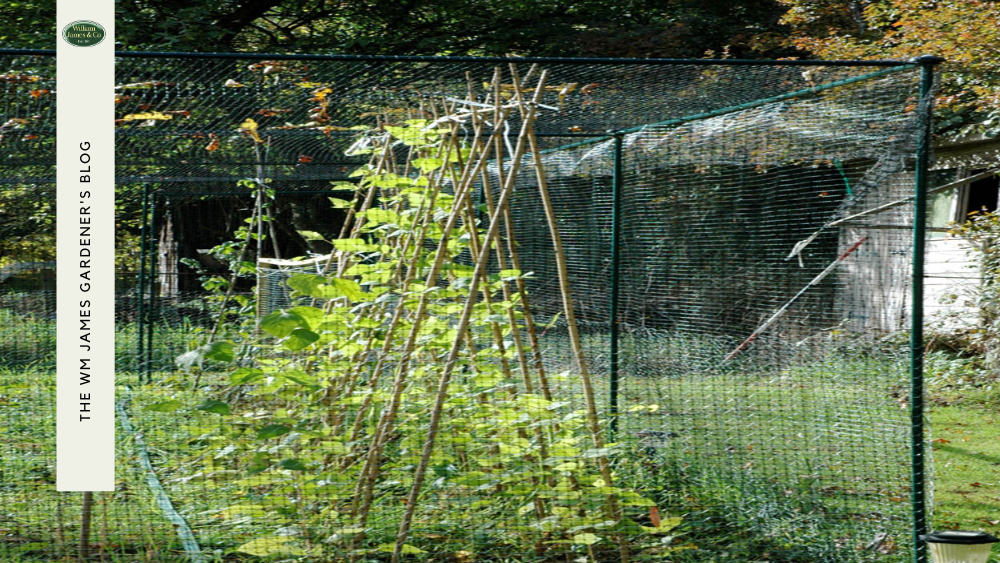We use cookies to make your experience better. To comply with the new e-Privacy directive, we need to ask for your consent to set the cookies. Learn more.
Vegetable Planting Monthly Calendar: When To Plant Vegetables
- Admin
- WM James Gardening Blog
- 12 Mar 2021
-
9views

You can sow seeds, plant or harvest from your vegetable garden almost all year round. When you look at the ideal vegetable planting calendar, you can see the main planting period is Spring. Knowing when to plant vegetables is easier than knowing what to plant. So a vegetable planting monthly calendar is an excellent place to start.
If you’re just starting your gardening journey, then knowing when to plant vegetables is one part of a bigger learning exploration. Take a look at our 10 DIY gardening tips for beginners; it’s a useful guide to creating the perfect space to enjoy all year round. But for now, back to our vegetable planting monthly calendar guide.
Vegetables to Plant in Spring
Spring is the true start in the vegetable planting calendar. March to May is a transformational season as the sun comes out. April showers soak the ground, and soil and air temperatures rise.
However, you define Spring (astronomically or meteorologically) when March first arrives. There's a collective sigh of relief that the days are getting lighter—red-letter days in the vegetable planting calendar.
If you have been busy with seedlings until now, you will be looking to transplant those ready for growing. Before digging them into the garden, it pays to harden them off by placing them in their containers in a sheltered place outdoors.
Keep an eye on the weather forecast, especially in March and April, to avoid any risk of a late frost. You should be safe by mid-May.
Onion and shallot sets are hardy enough to go in mid-March, and it’s also an excellent time to plant the potatoes you’ve had chitting. Weather watching is a vital part of deciding what to do when following a vegetable planting monthly calendar.
April is a busy month for sowing outdoors: beetroot, beans, broccoli, cauliflower, chard, spinach, rocket and radish. If you're patient and looking to add some luxury to your vegetable planting, it’s an excellent time to plant Asparagus. There’s a two to three-year wait on the vegetable planting calendar until you can harvest asparagus spears, but it will be worth it.
May is the month for undercover (cloche or gauze) sowing of delicate vegetables that don't like the cold. Sweetcorn, courgettes, marrows, pumpkins and squash. Knowing when to plant vulnerable vegetables comes with experience. Hardier greens can plant out in May like Brussels sprouts, summer cabbages, celery, celeriac and leeks.
| Onions & Shallots | Spinach | Rocket |
| Potatoes | Asparagus | Sweetcorn |
| Beetroot | Courgette | Marrow |
| Beans | Pumpkin | Squash |
| Brocolli | Brussels Sprouts | Summer Cabbages |
| Cauliflower | Celery | Celeriac |
| Chard | Leeks |
Vegetables to Plant in Summer
June brings hot and sunny days, the longest being June 21st, the summer solstice. It’s a time when the more northern and chillier parts of the UK can catch up.
June and July are the last months for sowing outdoors. Chard, spring onions and pak choi are all still repeatable. Regular repeats, sowing every two weeks, of beetroot, French beans, kohlrabi, lettuce, will deliver a steady supply of hand-picked fresh vegetables and salads at their very best.
June is the peak time to plant out leeks. Turnips as a main crop sow outdoors in July August, and rocket is still going strong.
Watering is critical in the Summer months. Be sure to give the soil a good soaking. That’s better than a light sprinkling which can encourage shallow rooting and seems to favour pests like slugs. In July, the hottest month in the vegetable planting calendar, twice-daily watering may be necessary.
August has its challenges as the garden gets left behind for the Summer holidays. There’s the opportunity to be still sowing Spring and Chinese cabbage and hardy lettuce varieties before you go. Late or Winter spinach is unusual in the vegetable planting calendar because it is best sown outdoors during August and September.
| Chard | Spring Onions | Pack Choi |
| Beetroot | Frech Beans | Kohlrabi |
| Lettuce | Turnips | Rocket |
| Chinese Cabbage | Hardy Lettuce Varieties | Spinach |
Vegetables to Plant in Autumn
Most of the time spent in the garden at this time of year will be harvesting the bounty of all your sowing and planting efforts so far. If there’s a late run of hot weather, you might even get to relax and sit down. If you continue gardening in October, though, you will be looking at the bare patches appearing on your plot and now is the time to sow your green manures.
Green manures are plants that grow fast, so their foliage smothers weeds. They help with nutrient balances in the soil, provide compost material and help with soil structure.
Anything you do sow at this time of year will need to be a hardy variety. White Lisbon spring onions are a good example, and these will be ready for the following Spring. A hardy lettuce like Arctic King will be happy with less Summer heat and will also be ready for Spring.
Japanese onion sets are a hardy short-daylight variety, and October is the last chance for planting these. Garlic can go in too, but November is a better month as it likes a bit of cold weather to start. November is also the month for peas that are hardy like Meteor as well as the time to protect plants from frost.
| White Lisbon Spring Onions | Hardy Lettuce | Japanese Onions |
| Garlic | Peas |
Vegetables to Plant in Winter
There's not a lot of planting to be done come December. If you're late with garlic, then these can still go in.
Surprisingly there’s still quite many harvesting opportunities for things like winter brassicas: kale, cabbage and cauliflowers. And with Christmas in mind, Brussels sprouts will be popular for those that like them. Leeks will be ready, as will artichokes and parsnips. Removal of remaining potatoes and carrots is essential to prevent rot and pest damage.
A greenhouse or polytunnel will help you extend the growing season by starting earlier and harvesting later. Even so, when it comes to knowing when to plant vegetables, even with a greenhouse or polytunnel, December is the one month you can safely plant nothing.
Even in January, there's a few things you could start under glass, but there's not enough light or warmth to make it worthwhile.
February can often be the coldest month, depending on where you are, so holding off planting is advisable. Wet or frozen ground will not be kind to seeds or seedlings. Chitting potatoes is a fruitful job in readiness for Spring planting. You can sow broad beans and peas, but better to give them some protection with a cold frame, cloche or greenhouse.
Growing in winter takes patience and practice. These are our top tips for growing winter veg.
| Broad Beans | Peas | Carrots (In Greenhouse) |
Wrapping Up
Sowing your vegetable crops at the right time of year is essential to growing success. You can sow directly outside in the ground or indoors where the temperature will be warmer and help get them going. Remember also to harvest them at the right time.
Ensure eating them is marked clearly in the vegetable planting calendar, so you get them at their peak of tenderness and taste. Learning from experience and knowing when to plant vegetables will always be particular to your local conditions.
Gardening generally is an all year round activity, there's never a time when there’s nothing to do. Planning ahead is one of the key things you learn about gardening.
One of the joys of gardening, aside from being in the moment, getting your hands dirty and being outside, is knowing that you can watch and nurture the progress of your plants through the seasons up until the point where you can pluck the fruits of your labours. Once you have set up a vegetable planting monthly calendar you can revisit it and refine it each year.











